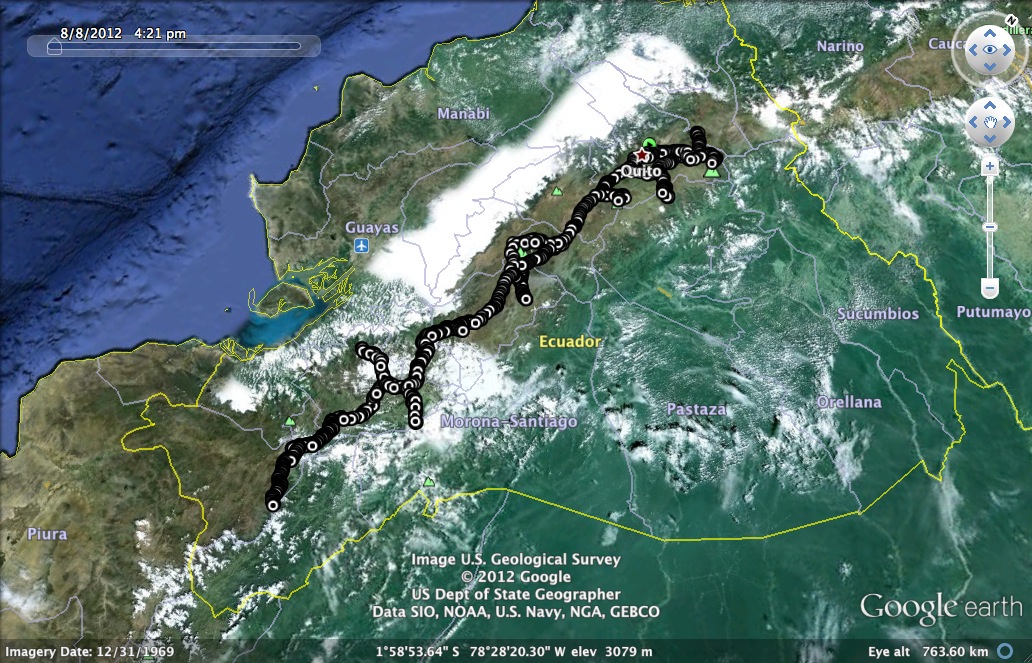The GPS tells that the team moved a total of 2390 km with a maximum speed of 110 km/h and average speed of 25.5 km/h (remeber this number includes the hiking). Here the map of the tracks and our vehicle: "the mountain tapir".
Back to Quito
The team spend the last day of the expedition doing some shopping and trying exotic food before driving to Quito. The market at Otavalo (see photos) is famous for their souvenirs and handcrafts on Saturdays. The food was Yaguarlocro, a potato base soup with corn, peanuts, lamb stomach, and lamb blood. It was pretty good.
Ecuador day 7
Day 7 was about Chimborazo, an amazing volcano. The landscape was amazing, interestingly drier than the mountains at the east of the country (kind of similar to the Puna of Perú). Only two species of Diplostephium were found: D. ericoides and D. hartwegii (the most common species in Ecuador). Since the tour around the volcano ended around noon, the team decided to visit the next collection spot: a chain of mountains east of "El Chimborazo" named "El Altar". With no roads reported in the GPS neither google earth the expectations of getting to the paramo were low. In fact the roads do not cross the mountains and the team barely got to the base of the paramo with no luck finding Diplostephium. Enjoy the vicuña pictures.
Ecuador day 6
The team visited a collection site between the towns of Gualaceo and Limon. It turns out to be one of the most diverse places in terms of Diplostephium. Five species were collected ! After the collection, the team traveled to Riobamba, a small city close to the next collection spot: Chimborazo.
Ecuador day 5
Day five was a Cajas day. The team visited Cajas National Park (east to Cuenca) and collected two species of Diplostephium. Cajas is a beautiful place and it is a big big park. Although it seems clear that Diplostephium likes the east mountains better since more species are found there. I am tired, so please anjoy all the photos.
Ecuador day 3: the lost hat
One of the most amazing things of the hiking was the páramo, it was a very different páramo from the one of Colombia, in the peaks were the wind is really strong the vegetation was dominated by some dwarf Bambusoideae grass. In between this grass Diplostephium empretifolium was found, a compact subsrhub apparently adapted to the strong wind.
By the way, in one the pass up there the wind took my hat way, it blow 20 m high and then fell in the cliff, it was a funny/sad lost. That hat traveled with me for more than three years from 2009 to uncountable places, I hope I can find another one here.
Ecuador !!!
El proyecto Diplostephium viaja a Ecuador para hacer salidas de campo, colectar especímenes, visitar herbarios y hacer intercambios acádemicos con botánicos locales.
The Diplotephium project is now traveling in Ecuador doing field trips, herbarium curation, and academic collaboration with local botanists.


































